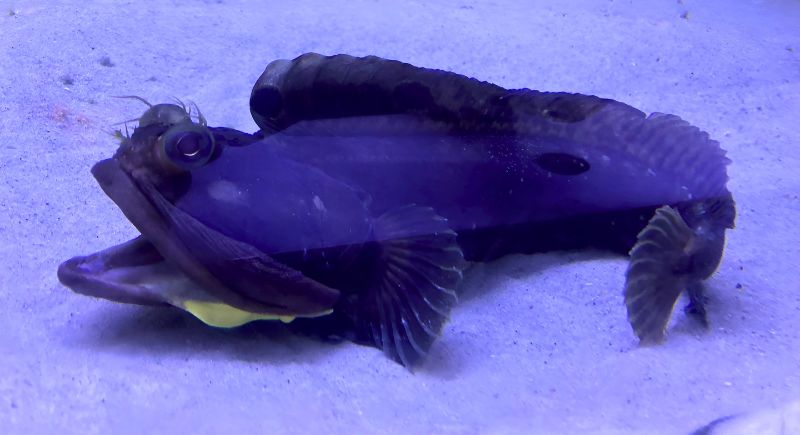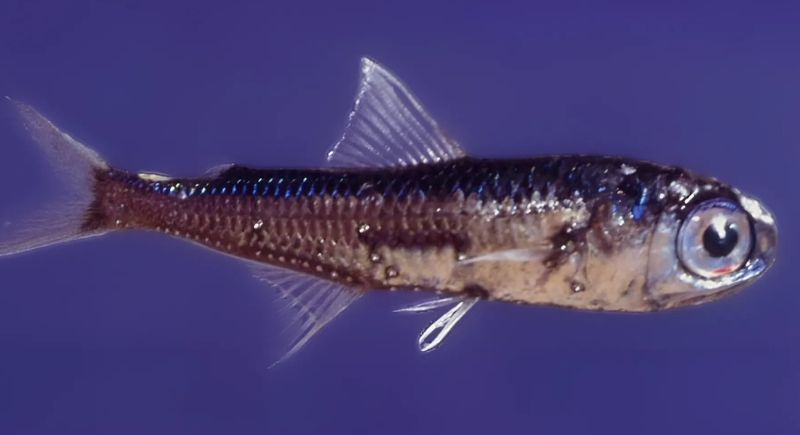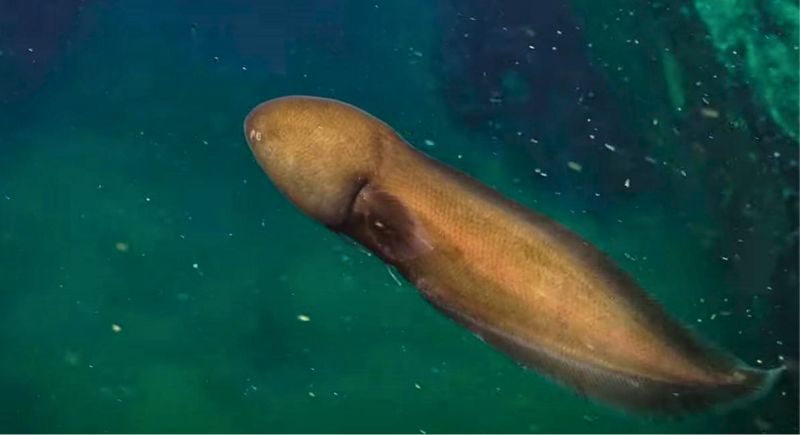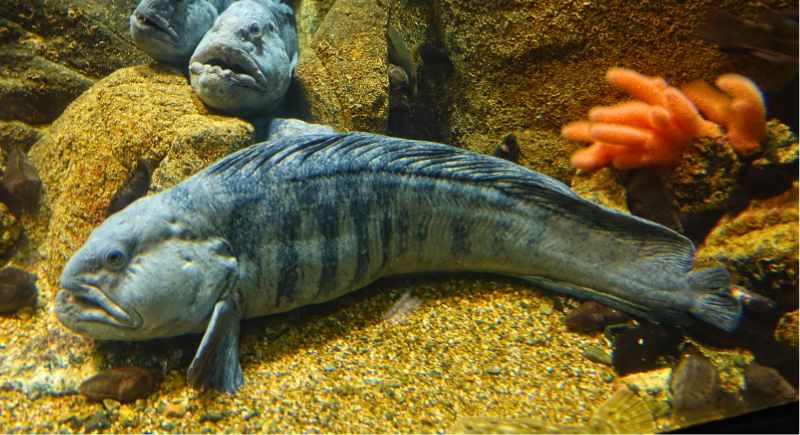15 Deep Sea Creatures That Live in Complete Darkness
Beneath the ocean’s surface lies a world of perpetual darkness, home to some of Earth’s most bizarre and fascinating creatures. These deep-sea inhabitants have evolved extraordinary adaptations to survive in an environment of frigid temperatures, crushing pressures, and lack of sunlight. Let’s discuss some of them below.
Anglerfish

Credit: Youtube
Deep-sea survival isn’t fair, and the anglerfish proves it. A glowing lure dangles over its head and tricks its prey into its massive jaws. It waits for the perfect moment to strike while floating motionless as deep as 6,561 feet. Females grow up to 7 inches, while males stay tiny and fuse to their mates like unwilling hitchhikers.
Viperfish

Credit: Reddit
Looking at this deep-sea predator is enough to make anyone uneasy. Long, needle-like fangs jut out over its mouth give it an unhinged appearance. Living between 656 to 14,436 feet, it flashes light-producing organs to attract prey before lunging at lightning speed. The 12-inch-long creature thrives in a world of complete darkness.
Black Seadevil

Credit: Wikimedia Commons
There’s nothing friendly about the black seadevil. A gaping mouth filled with jagged teeth and a bioluminescent lure makes it one of the most terrifying hunters in the deep. Females grow up to 7 inches, while males never exceed 1 inch. This deep-sea nightmare rules the pitch-black abyss given its 656 to 6,561 feet locality.
Sleeper Shark

Credit: Wikimedia Commons
Gliding silently through the deep, the sleeper shark moves with a slowness that hides its true power. It reaches 23 feet and hunts at depths of 7,218 feet. Its sluggish reputation doesn’t stop it from being a top predator with the ability to feast on fish, squid, and scavenged remains. A lifespan exceeding 200 years gives it all the time in the world.
Sarcastic Fringehead

Credit: Wikimedia Commons
Mouths aren’t usually used for intimidation, but the sarcastic fringehead takes it to another level. When threatened, it unhinges its jaw into a gaping, colorful warning. Its 12-inch size enables it to hide in crevices off California’s coast at depths of 240 feet. This aggressive little predator is fearless and refuses to back down from a fight.
Stoplight Loosejaw

Credit: Youtube
Hunting in darkness isn’t easy, something the stoplight loosejaw has an advantage in. It produces red bioluminescence, a color most deep-sea creatures can’t see. This secret weapon helps it spot prey without being detected. It grows up to 10 inches while living between 1,640 and 3,280 feet deep.
Chimeras

Credit: Wikimedia Commons
Chimeras are unlike any other fish with their ghostly, ancient, and weird looks. They seem like creatures from another planet with their smooth, scaleless bodies and oversized eyes. Some species reach 5 feet and lurk between 656 and 8,530 feet. A venomous spine near their dorsal fin adds to their mystique.
Mariana Snailfish

Credit: Reddit
Crushing pressure, freezing temperatures, and darkness sound like a terrible place to live, except it’s home to the Mariana snailfish. Thriving at 26,500 feet, it survives where few animals can. This small, translucent fish reaches about 11 inches and feeds on tiny crustaceans. It proves that the ocean’s depths are far from empty, simply incredibly selective.
Lanternfish

Credit: Wikimedia Commons
For a tiny fish, the lanternfish plays a massive role in the ocean’s ecosystem. It’s one of the most abundant vertebrates on the planet despite rarely growing beyond 6 inches. Found between 984 and 3,937 feet, its glowing spots help it communicate and confuse predators. Being small doesn’t mean being unimportant in the deep sea.
Red Handfish

Credit: Wikimedia Commons
Fins are overrated when you can walk. The red handfish uses its pectoral fins like hands by shuffling along the ocean floor instead of swimming. This fish reaches 6 inches and is found off Tasmania’s coast at depths of 66 feet. Its bright red body and grumpy expression make it one of the strangest and rarest fish in the ocean.
Rattail Fish

Credit: Wikimedia Commons
The rattail fish has a big head, a long tapering body, and oversized sensory organs that give it an alien-like appearance. It roams the deep at 656 to 6,561 feet and reaches up to 5 feet in size. Its ability to detect the faintest movements makes it a deadly hunter in darkness. Indeed, patience is a predator’s best tool.
Faceless Cusk Eel

Credit: Instagram
A fish without a face sounds like something out of a horror movie, but it’s a reality in the deep. The faceless cusk eel has eyes hidden beneath its skin, which gives it a featureless look. It thrives under pressure given that it lives as deep as 13,123 feet with a 14-inch size. In an environment where sight is useless, other senses take over.
Deepsea Lizardfish

Credit: Instagram
Sharp teeth, a long body, and an ambush strategy make the deep-sea lizardfish a deadly predator. Lurking at depths of 1,968 to 11,483 feet, it reaches up to 28 inches. The motionless fish doesn’t chase prey and instead chooses to fuse into the seafloor before launching an attack. Life in the abyss rewards patience, and this predator has plenty of it.
Atlantic Wolffish

Credit: Wikimedia Commons
Cold water isn’t a problem when your body produces antifreeze. The Atlantic wolffish has special proteins that keep its blood from freezing in the frigid North Atlantic. Growing up to 5 feet, it crushes hard-shelled prey like crabs and sea urchins with its powerful jaws. It’s a master of deep-sea survival that lives at depths of 1,640 feet.
Barreleye

Credit: Instagram
A fish with a transparent head sounds like science fiction. That makes the barreleye the real deal. Inside its fluid-filled skull, tube-shaped eyes rotate to scan for prey. It grows up to 6 inches and drifts to depths of 1,968 to 2,625 feet. It spots food where others see nothing with a vision adapted for near-total darkness.